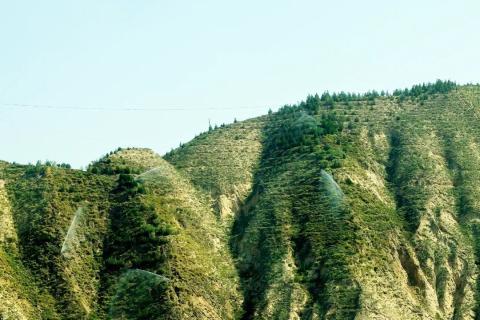
10 month10 day
After the National Day holiday, I traveled during off-peak hours and started a circuit tour of the three northwest provinces (Gansu, Inner Mongolia, and Qinghai) with a tour group.
Departing from Kunming, the plane stopped in Chongqing. The 6:55 flight was delayed for half an hour. It finally took off at 7:30, and arrived at Lanzhou Zhongchuan Airport at 11:30 noon.
I remember coming to Lanzhou five years ago, more than once. Come again today. From the car, Lanzhou New District has completely become a new city.
The road sign from Zhongchuan Airport to Lanzhou City is marked 72 kilometers. In my impression, this is the farthest domestic airport I have ever been from the city.
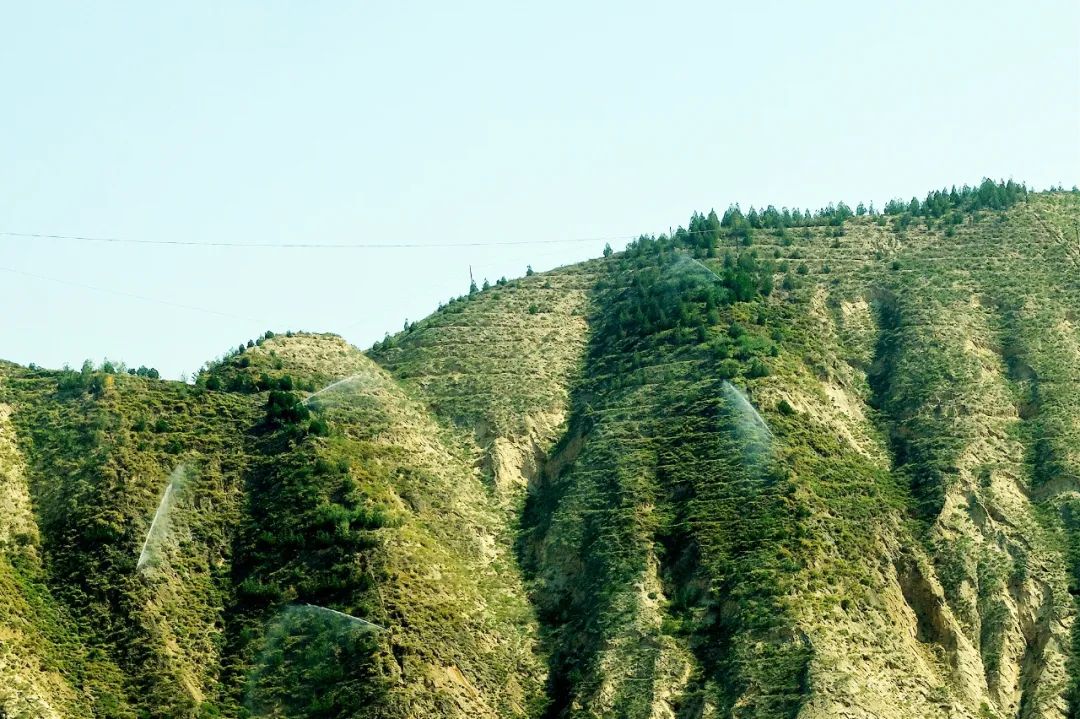
Along the way, you can't see much change in the mountains on both sides of the road. At the turn of autumn and winter, looking from a distance, it is still bare, with few trees growing. Coming to the northwest from the green Yunnan, I feel that the contrast between the vegetation on the mountains is too great. I remember that when I came to Lanzhou a few years ago, my local colleagues introduced that the city was responsible for the greening of the barren hills around the city. Because the soil on the mountain lacks water, it must be watered frequently. Several years have passed, with little success. Just as we were approaching the city, there were several hills. We saw silver water pipes erected and spraying water for watering. A small tree was lush and green, and it was also taller than a person. It can be seen that as long as you put in the effort, you can still reap results, but the cost is high. If the barren mountains become green, it may have a good impact on the natural climate.
Lanzhou, the capital of Gansu Province, is referred to as "Lan" or "Gao". Since the establishment of the county in the Qin Dynasty, Lanzhou has a history of more than 2,200 years. Since ancient times, it has been a transportation hub and military fortress that "connects the four regions and connects thousands of miles." It is an important town on the ancient Silk Road. In ancient times, it was named Jincheng, which means "Jincheng Tangchi". . The Yellow River flows through the city and is known as the "Pearl of the Yellow River".
When arriving in Lanzhou, the top choices for internet celebrity check-in spots are naturally the Yellow River Iron Bridge, the Yellow River Mother Sculpture and the Waterwheel Park. These three scenic spots are all on the shore. They are landmark buildings in Lanzhou and an important part of Lanzhou's Yellow River style culture.
The tour group was organized in Lanzhou. We arrived in Lanzhou just at noon, and we had half a day in Lanzhou to arrange by ourselves. When you get to the hotel, put your luggage away and take a short rest. The group went up the Yellow River and looked for scenery along the way.
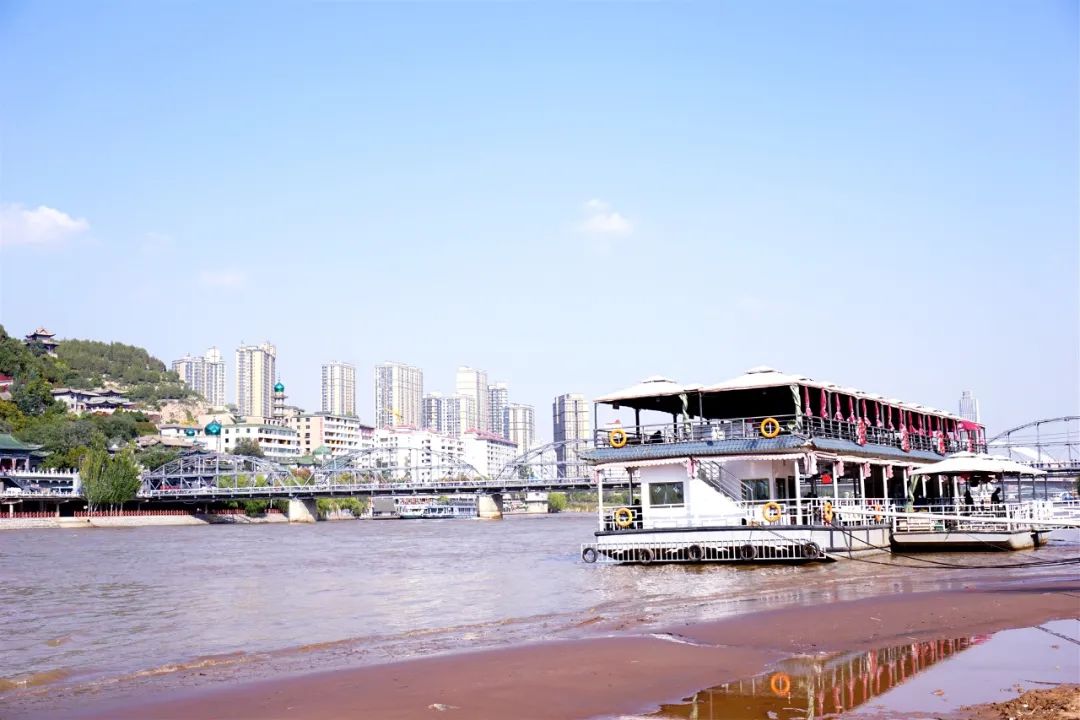
The Yellow River that passes through the city was once an obstacle across the transportation hub of Lanzhou. There was once a folk song: "The Yellow River is dangerous, the Yellow River is dangerous; it is impossible to cross the flood, and it is difficult to sail in the flood; across the river it is like The next day, crossing the river was like crossing the Gate of Hell!”. People from the north and south sides of the Yellow River had to cross the Yellow River in small boats and sheepskin rafts in summer and autumn. In winter, the river froze and boats and rafts could not cross, so they could only cross the river by walking on the ice. It is the common wish of local officials and people to build a bridge across the Yellow River to facilitate cross-strait traffic.

(Zhenyuan Floating Bridge. Picture taken from the Internet)
During the Hongwu period of the Ming Dynasty , Duke Feng Sheng of the Song Dynasty and Duke Deng Yu of the Wei State both built floating bridges on the Yellow River in Lanzhou due to military needs. However, the pontoon bridge can only be built when the ice melts. In winter, the river freezes and has to break. It is often demolished or destroyed and has been relocated several times. In the eighteenth year of Hongwu (1385), Yang Lian, the commander of the Lanzhou Guards, relocated and built the Zhenyuan Floating Bridge which was known as the "No. 1 Bridge in the World" At the current location of the Lanzhou Yellow River Iron Bridge. The pontoon bridge "uses twenty-four giant boats across the river, with wooden beams, boards, and fences. There are four iron pillars on the north and south sides, forty-five wooden pillars, and two iron cables, each one hundred long. Twenty feet, brown, linen, and leather ropes belong to each other, folded in winter and built in spring" (Volume 9 of "Gansu New General Chronicles").
"Every year when the ice melts, hundreds of people are needed to build a bridge, either on the shore, in a boat, or on a raft. The boat is slowly lowered from the upstream with a giant rope, and four or five large baskets are tied to the boat. The baskets are filled with stones. When the boat floats to the right place, the basket filled with stones is immediately thrown into the river. After the boat is stabilized in the river, it is immediately connected with hemp ropes and iron cables, so that the bridge is completed. "It can be seen that the project is not easy, and the bridge is completed year by year. in this way. Although it is still the winter season and spring construction, it has made cross-strait travel much more convenient and has had a huge impact on the economy and military of Lanzhou and even the northwest.
Today, there is still a general iron pillar on the south bank of the bridge, recording the history of the 500-year history of the Zhenyuan Floating Bridge. The rise and fall of the years.
During the Guangxu period of the Qing Dynasty, building an iron bridge over the Yellow River was put on the agenda. On October 28, the 32nd year of the reign of Emperor Guangxu of the Qing Dynasty (1906), the Gansu State Administration of Foreign Affairs and the German firm Taylor & Co. formally signed a repair contract for the Lanzhou Yellow River Iron Bridge, and began comprehensive preparations for the construction of the Lanzhou Yellow River Iron Bridge.
Lanzhou Yellow River Iron Bridge, also known as Zhongshan Bridge, is located in the middle section of Binhe Road in Lanzhou City, at the foot of Baita Mountain. It is the first real bridge on the 5,464-kilometer Yellow River, so it is known as the "No. 1 Yellow River Bridge in the World". In 1942, it was renamed "Zhongshan Bridge" in memory of Dr. Sun Yat-sen. The iron bridge was designed by the American Bridge Company, constructed by the German firm Taylor & Co., and constructed by Chinese craftsmen.
According to the "Inscription of the Creation of the Lanzhou Yellow River Iron Bridge", the construction of the Lanzhou Yellow River Iron Bridge began in February of the 33rd year of the reign of Emperor Guangxu of the Qing Dynasty (1907) and was completed in July of the first year of Xuantong (1909). It took nearly two and a half years and cost a lot of silver. 306,600 taels.
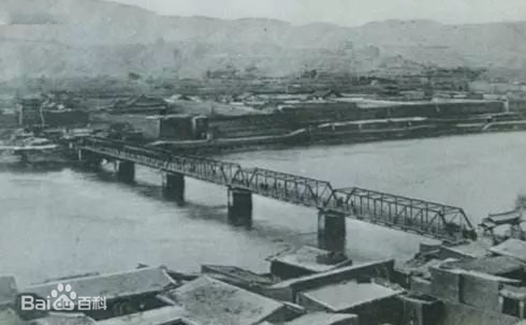
(Old picture of the iron bridge. The picture is taken from the Internet)
The upper structure of the Yellow River Iron Bridge was originally a trapezoidal through-type steel truss. In 1954, Lanzhou City renovated the Lanzhou Yellow River Iron Bridge and replaced the original ladder-shaped arch frame with five curved steel frame arch beams and an iron plate bridge deck. After that, five major repairs and reinforcements were made. It is now closed to motor vehicles and has become a bridge only for pedestrians and non-motor vehicles. It is a landmark building in Lanzhou and a popular place for tourists from all over the world to visit Lanzhou.
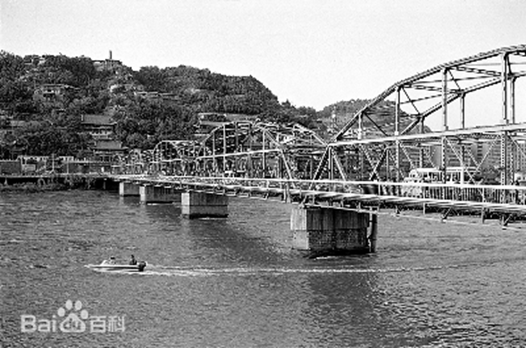
(The Yellow River Iron Bridge after renovation in 1954. The picture is taken from the Internet)
There is a constant flow of people on the Yellow River Iron Bridge, pedestrians are in a hurry, and tourists are vying to choose a good position and angle to take photos with the bridge.
Crossing the bridge to the north bank is Baita Mountain. There is a white pagoda on the mountain. From a distance, there is also a constant flow of people on the mountain passage.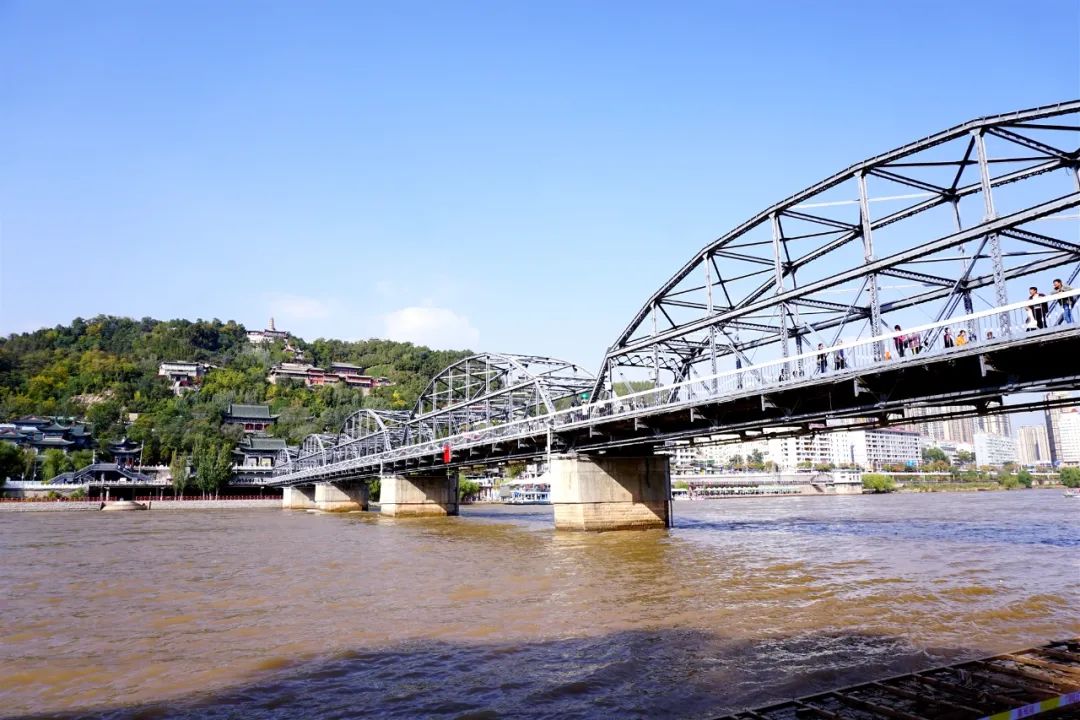
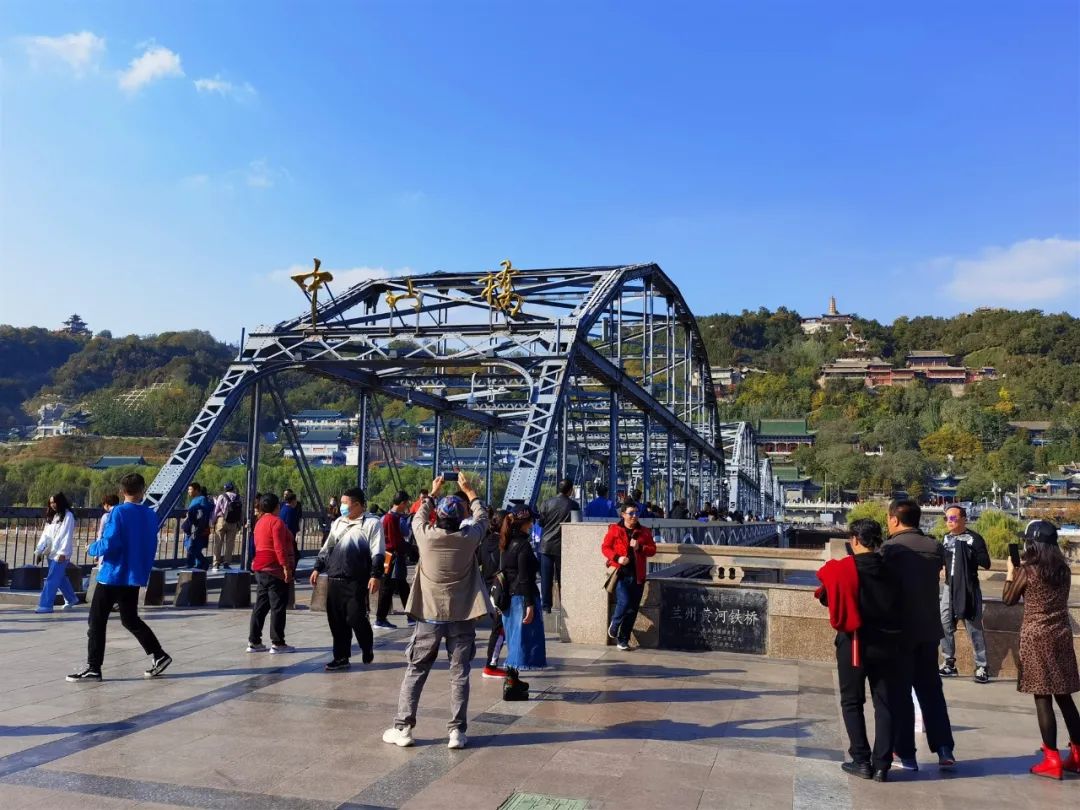
After visiting the Yellow River Iron Bridge, we continued to move west along the river.
In Lanzhou, waterwheel culture is also an important part of urban culture. Not far to the west from the Yellow River Bridge, there is a waterwheel park on the edge of the Yellow River. There are two tall waterwheels in the park. One wheel is constantly rotating driven by the water flow, and the other one is standing quietly aside, as if it is the same as the waterwheel park. The rotating ones refer to each other.
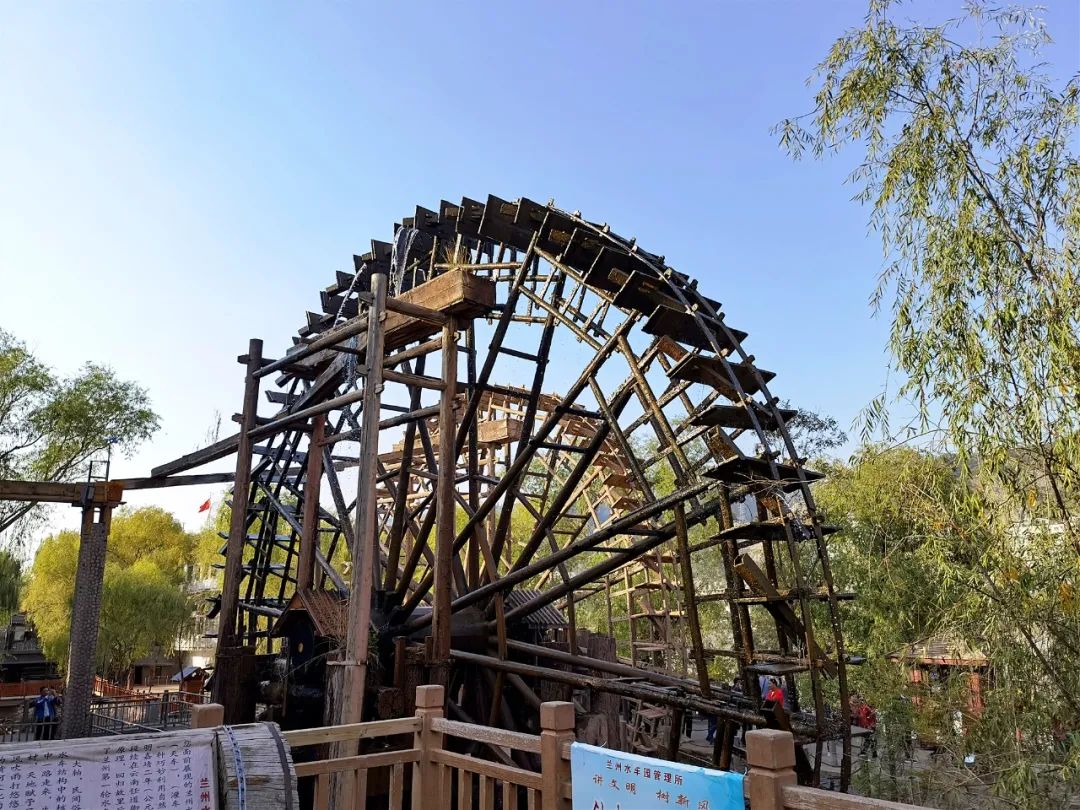
Lanzhou Waterwheel is also called "Crane Car", "Turnover Car", "Filling Car" and "Tiger Car". According to the records of "Rebuilding Gaolan County Chronicles", Duan Xu, a native of Duanjiatan, Lanzhou in the Ming Dynasty, "when he was living in Xuli, he created an overturning cart and turned the river upside down to irrigate the fields, which was an ingenious idea. All the farmers in the Chuanhe River followed suit. "Duan Xu, named Shaoxian, was a Jinshi in the second year of Jiajing in the Ming Dynasty. Erudite and talented, he once traveled to several provinces in the south as an official and benefited from many administrations. When he was serving as the censor of Yunnan Province, he developed a strong interest in the local barrel carts, so he sent someone to draw a picture and keep it with him. In his later years, he returned to his hometown and learned from Yunnan's barrel-wheel irrigation technology. In the 35th year of Jiajing (1556 AD), he created a waterwheel suitable for the local area in Lanzhou and began to set it up on the north bank of the Yellow River outside Guangwumen today. Later, a three-wheeler was erected at the north entrance of the present town to irrigate the nearby vegetable orchards.
After Duan Xu's waterwheel became successful, farmers on both sides of the Yellow River rushed to imitate it. According to relevant information, by the end of the Qing Dynasty, there were 157 waterwheels in Lanzhou. In 1952, Lanzhou had 252 waterwheels, and there were many waterwheels on both sides of the Yellow River, with a total irrigation area of 100,000 acres. At that time, the number of waterwheels in Lanzhou City was eight times that of Hama, Syria, which was known as the "City of Waterwheels". It became the real "waterwheel capital" in the world at that time.
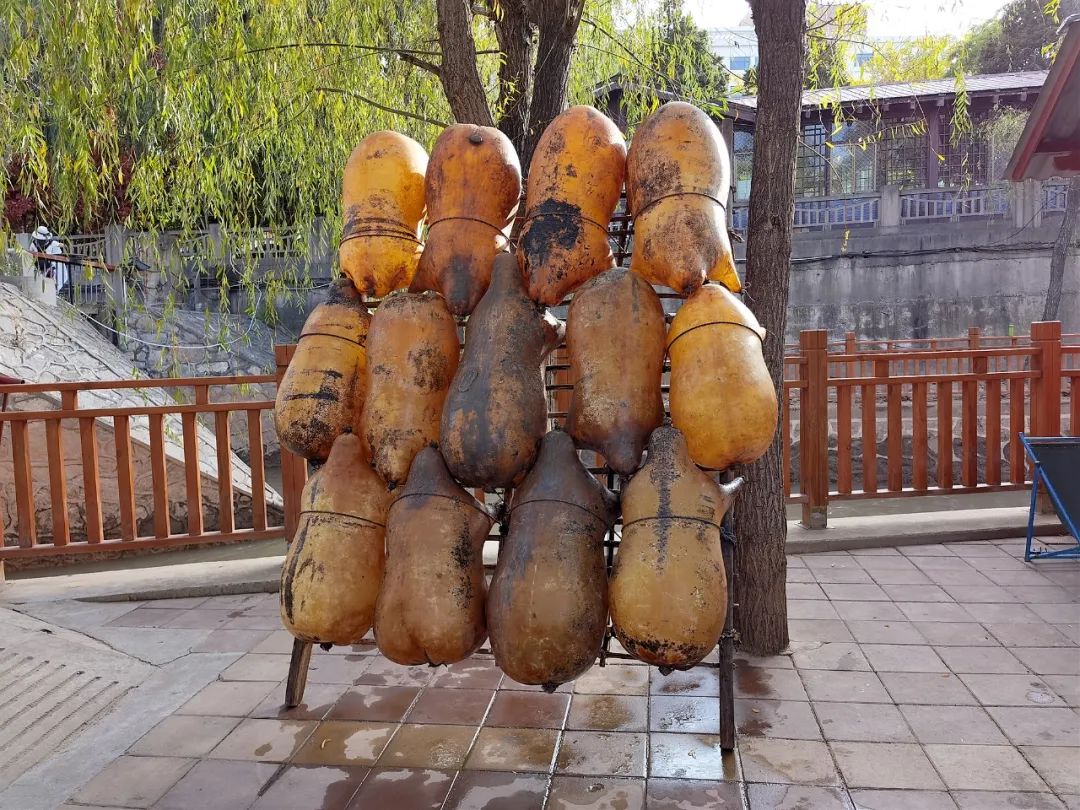
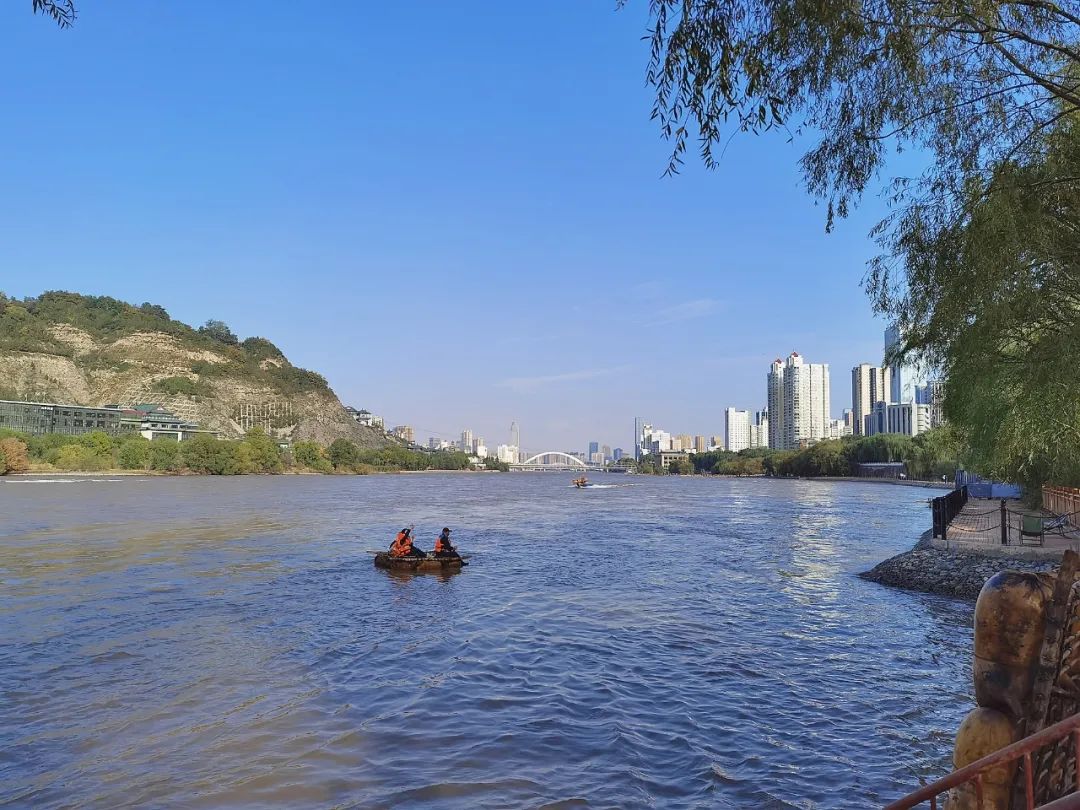
There is a small pier in the Waterwheel Park. The sheepskin rafts, which were the means of transportation across the river in those days, have become a device for tourists to experience and play here. Get on the sheepskin raft and row along the undulating river to the downstream pier, where the speedboat will drag the sheepskin raft up. Imagine what it would be like to sit on a sheepskin raft on the wide river, in the rolling yellow water, and enjoy the beautiful scenery on both sides. Unfortunately, this is mostly a project for young people.
Continuing to walk forward, you will reach the Yellow River Mother Sculpture.
We often say that the Yellow River is the cradle of the Chinese nation and the mother river of the Chinese nation.
"The water of the Yellow River comes from the sky and rushes to the sea never to return." The Yellow River originates from the northern foot of the Bayan Har Mountains on the Qinghai-Tibet Plateau. It flows through 9 provinces (regions) in China from west to east, with a total length of about 5,464 kilometers. It covers an area of approximately 752,443 square kilometers and flows into the Bohai Sea in the east.
The Yellow River Basin, which stretches for thousands of miles, has a mild climate and superior hydrological conditions, which is conducive to the growth of crops. As early as ancient times, our ancestors settled here, lived and multiplied. The Xia, Shang, and Zhou dynasties in the initial stage of Chinese culture, as well as the later Western Han, Eastern Han, Sui, Tang, and Northern Song Dynasties, were several powerful unified dynasties. Their core areas were also in the middle and lower reaches of the Yellow River; many ancient classics reflect the wisdom of the Chinese nation. Cultural works were also produced in this area; science and technology, inventions, urban construction, literature and art that marked ancient civilization were also produced here. The Yellow River as the mother river is also included in this.
The Yellow River Mother sculpture located in the middle section of Binhe Road in Lanzhou is composed of "mother" and "baby", symbolizing the Yellow River mother and Chinese descendants respectively. This is another internet celebrity check-in point in Lanzhou. When I got closer, I saw many tourists taking pictures under the sculpture, and there was a lot of bustle. One group just left, and another group came back. Some tourist groups take group photos and individual photos, so it is difficult to have free time under the sculptures.
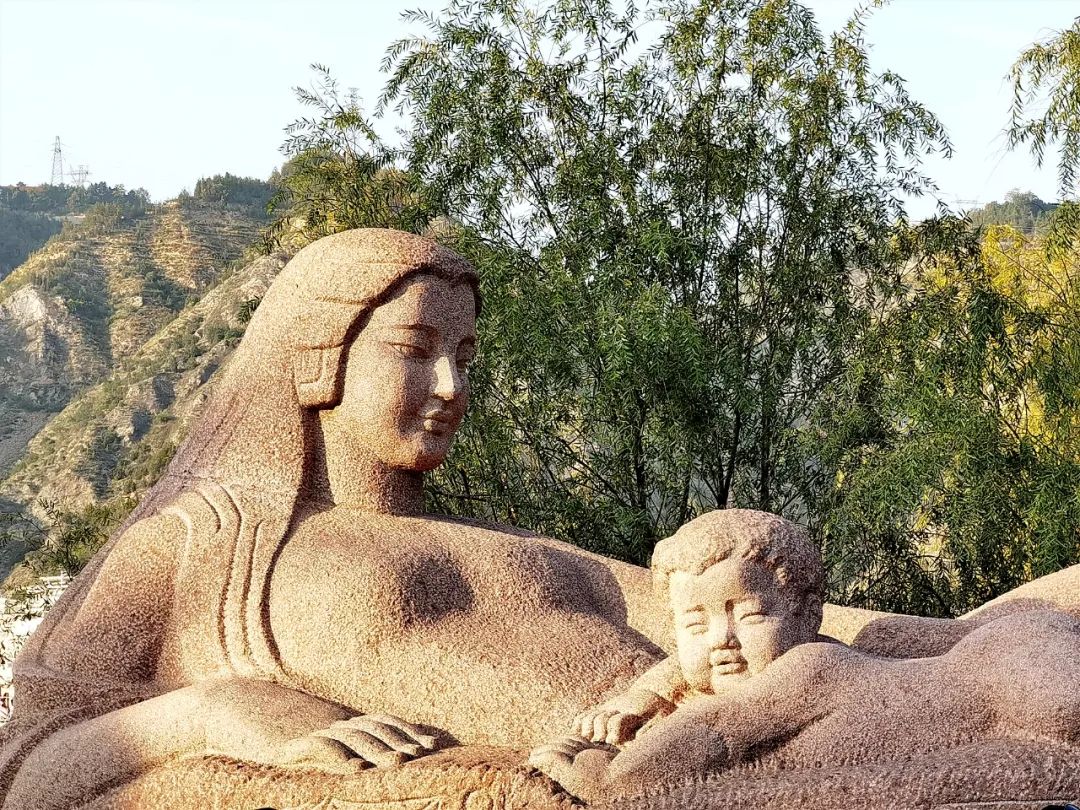
As the sun sets, the soft sunlight shines on the sculpture. The mother lying on her back above the waves looks even more gentle, kind and peaceful. The baby is swimming in his mother's arms, his young face full of happiness and security.
Seeing that there were too many people in front of the sculpture, I stood on a step from a distance and stared at my mother's face for a long time, feeling her kindness and tenderness in my heart. Before leaving, I took a photo as a souvenir of my visit again.
A place with profound history and culture will always give you a different feeling every time you visit, allowing you to calm down and slowly taste, explore and think. Lanzhou is such a place.
After visiting three scenic spots along the Yellow River, it was getting late and it was dinner time.
In the past, when I came to Lanzhou, I was always on business and came and went in a hurry. This time is just right, I can have time to visit Lanzhou’s night market and taste Lanzhou’s delicacies. After searching on Baidu, there is a snack night market on Zhengning Road in Lanzhou, so you can take a taxi there.

When you travel to a city or a place, in addition to sightseeing, you don't go shopping in the streets and alleys, and if you don't taste the local delicacies and snacks, you can say that this "tour" is not adequate. In Lanzhou, someone said, "You have never been to Lanzhou Zhengning Road Snack Night Market, so you are really embarrassed to say that you have been to Lanzhou."
Lanzhou Zhengning Road Night Market Snack Street is located at the southern end of Qingyang Road from Shuangcheng Gate to Nanguan Crossing. The entire snack street is only about 200 meters long, and both sides are full of snacks from northern China. Every evening, the streets are lined with stalls, brightly lit and bustling with people. All the special snacks in the north are gathered here, including fried, grilled, stir-fried, boiled, and various cooking methods. Although the food here is mainly barbecue, it is Lanzhou's unique barbecue. Walking on the street, the items on the food stalls on both sides are dazzling and make people salivate. I really don’t know what to eat.
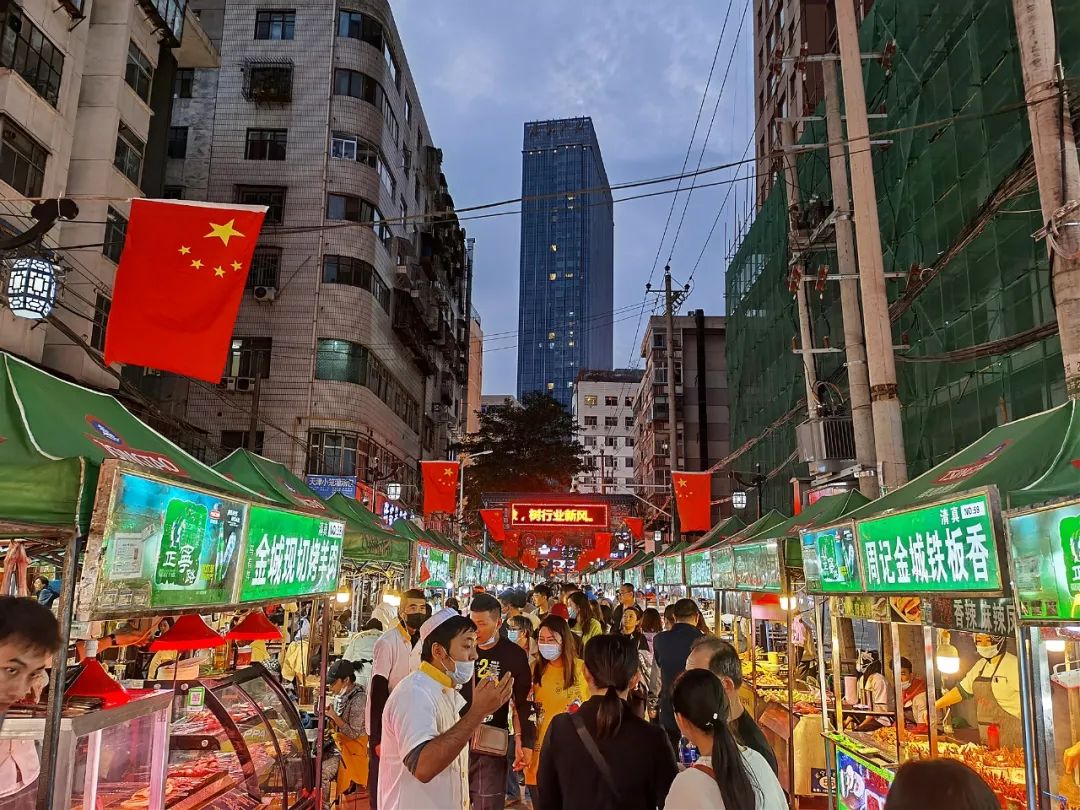

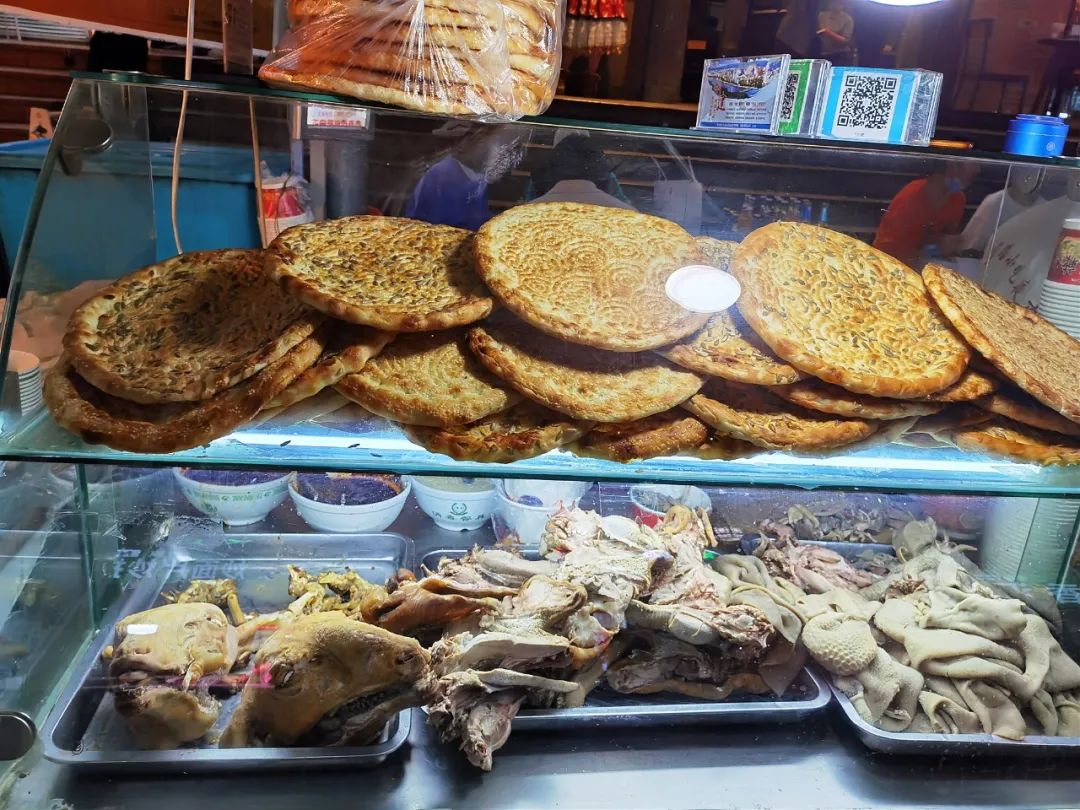
Our group found a restaurant and ordered a few snacks. I couldn't finish it, so I had to let the uneaten snacks remain in my memory and try them again when I have the opportunity.
